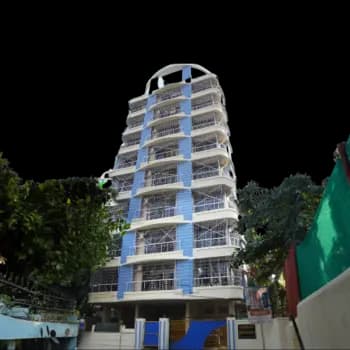Excoriation Disorder
Excoriation disorder is a psychological disorder in which a patient picks his or her skin compulsively. It is a type of body-focused repetitive behaviour in which a patient has an uncontrollable urge to pick, bite, or scratch his skin. The disorder can upset the routine of a patient; therefore, it is essential to know how dermatillomania is treated by consulting an expert.
The blog discusses excoriation disorder symptoms, excoriation disorder treatment, and what causes excoriation disorder (dermatillomania), among many other essential aspects.
What Is Excoriation Disorder (Dermatillomania)?
Dermatillomania, also known as skin-picking disorder and excoriation disorder, is a psychological condition in which a patient has a compulsive urge to pick or scratch the skin. The disorder is categorised under Obsessive Compulsive Disorder (OCD) and usually stems from stress, anxiety, or other kinds of emotional triggers.
This disorder is a body-focused repetitive behaviour. Such behaviour can cause injuries, infections, and significant scarring. Over some time, it can severely impact a person’s mental health and overall well-being.
Common Myths and Misconceptions
Myth 1: Dermatillomania is just a bad habit that includes skin-picking.
Fact 1: No. Dermatillomania is related to physiological changes in the brain, which makes it more than a simple bad habit.
Myth 2: Dermatillomania is caused by an unchecked and underlying skin problem.
Fact 2: False. This disorder is an impulse control disorder and is categorised under OCD. Therefore, picking skin can cause skin problems, but skin problems do not cause dermatillomania.
Myth 3: Dermatillomania is a type of self-harm disorder.
Fact 3: No. Dermatillomania is a harmful condition but is categorised not under “non-suicidal self-injury” or self-harm disorder. It is a compulsive disorder in which a patient does not feel relieved after inflicting pain on himself or herself.
Statistics and Facts
Dermatillomania is a relatively uncommon condition that currently affects approximately 2% of people at any given time. Obsessive-compulsive disorder, which includes dermatillomania as a condition, affects 2-3% of the total population globally, highlighting its broader prevalence.
What is the difference between Dermatillomania and Obsessive-Compulsive Disorder?
Obsessive-Compulsive Disorder (OCD) is a condition as well as a category under which many disorders fall. Dermatillomania is one such mental health condition that is categorised as a form of OCD. However, a key difference between the two conditions is that OCD people with dermatillomania feel comfortable after picking their skin even though it harms them. Unlike in OCD, patients feel rewarded and relieved after picking their skin.
Types of Excoriation Disorder
There are two types of dermatillomania:
- Automatic Skin Picking
Automatic picking of the skin happens unconsciously when a patient is engaged in activities like driving, reading, or working on a computer. Research says that the behaviour serves as a form of self-stimulation and is relieving. A single bout is often followed by a feeling of guilt and shame. - Focused Skin Picking
Focused picking of skin is a more conscious behaviour where a patient feels relieved only when he or she is picking a certain part. These urges stem from thoughts like wanting to remove imperfections like acne or scars on the face. Picking in such cases serves as a way to cope with uncomfortable emotions or alleviate feelings of boredom.
What Causes Excoriation Disorder (Dermatillomania)?
Excoriation disorder can be caused by many reasons. Here is a comprehensive list of reasons:
1. Compulsive Response to Skin Conditions
Skin picking can casually start as a gradual response to having a rash or an injury. The itching or discomfort during healing may lead to picking at these scars, causing new wounds. This creates a cycle of picking, bleeding, and scab formation, making it a habitual behaviour.
2. Stress or External Triggers
At certain times, picking skin is a coping mechanism, as it is a way to expend one’s energy to release the stress within. Some patients prefer biting nails, scratching, or pulling hairs to relieve tension, while others may do it as a soothing process.
3. Perceived Skin Imperfections
Patients who feel they do not look perfect might resort to skin-picking to “fix” those issues. Removing bumps, scars, or any other kind of irregularities on their faces, according to them, will make them look attractive, which later turns into an obsession.
4. Genetic Predispositions
People who have ancestors who were suffering from any kind of OCD are more susceptible to suffering from excoriation disorder. Sometimes, they observe elders picking on their skin and adopting it as a habit. Chemical imbalances in the brain and environmental factors also play a role.
5. Mental Health Disorder
Other mental health conditions like depression, anxiety, and stress can also make a person pick at his skin as a way to relieve stress.
What Are The Symptoms of Dermatillomania?
The excoriation disorder symptoms include:
- A patient struggles to stop himself or herself from picking the skin.
- Injuries and scars lower the self-confidence of a person.
- Guilt, feeling ashamed constantly, and avoiding public gatherings are other prominent symptoms.
- Getting skin infections because of scratching wounds worsens the disorder.
The above-mentioned symptoms affect a person’s routine and hurt a person’s sense of confidence.
How Is Dermatillomania Treated?
The excoriation disorder treatment is a two-step process that starts with diagnosis and treatment, which includes therapy and medication.
Diagnosis
1. Symptom Evaluation
A psychiatrist or a psychologist evaluates all the symptoms presented by a patient to understand the severity of the problem. Thorough interview sessions help the professionals to understand what exactly the patient is going through.
2. DSM-5 Diagnostic Criteria
DSM-5 (Diagnostic and Statistical Manual of Mental Disorders) criteria include:
- Repeated skin picking causes lesions.
- Repeatedly failing to solve the issue.
- Difficulty in performing routine functions because of distress.
- The behaviour is not because of any substance abuse or medical condition.
- There is no other psychological condition.
3. Differentiation from Other Problems
Once the above step is performed, psychiatrists start ruling out issues. The behaviour is evaluated to ensure that it is not depression, any form of body dysmorphic disorder, psychosis, and so on. An accurate diagnosis can be made once major problems have been eliminated.
4. Comprehensive Assessment
A review of medical history is done, and observation of skin-picking habits is made to understand the triggers. A clinical interview uses questionnaires and one-to-one conversations to measure the severity of symptoms.
5. Final Diagnosis
After careful assessment of records and tests, the condition is accurately identified and the treatment begins. The psychiatrist makes sure that it is not confused with any other mental health issue.
Excoriation Disorder Treatment
1. Talk Therapy
Talk therapy is a treatment in which patients discuss their thoughts and feelings with a therapist. The aim is to address emotional challenges faced by a patient and overcome personal difficulties.
Extensive interviews with therapists help in uncovering the root cause of the problem. This way, the treatment is more thorough, and healthier coping mechanisms are developed.
2. Habit Reversal Therapy
Habit Reversal Therapy (HRT) focuses on identifying triggers and replacing harmful behaviours with healthier alternatives. The four techniques of HRT are:
- Gaining awareness about the disorder is the first step, as it educates the patient systematically.
- Developing responses that do not harm the patient is an important aspect of the patient.
- Managing triggers helps a patient to learn how to manage symptoms independently.
- Build motivation to regain confidence. Since scars and wounds can lower the self-confidence of a person, affecting their social life, self-motivation is important.
3. Cognitive Behavioural Therapy (CBT)
With cognitive behavioural therapy, a patient is made to recognise negative patterns and substitute them with positive habits. The therapy starts with identifying triggers like boredom or stress and recognises thoughts that initiate skin picking.
Cognitive restructuring challenges these negative thoughts or makes a patient aware of his or her boredom. Mindfulness is encouraged so that patients' urges can be managed more skillfully and independently.
4. Medication
Medication is an effective excoriation disorder treatment as it includes antidepressants, anticonvulsants, antipsychotics, and nutraceuticals. Psychiatrists can prescribe antidepressants to regulate serotonin levels, anticonvulsants to help control muscle movements, and antipsychotics to balance brain chemicals. Nutraceuticals are prescribed as they reduce the urge to pick, which will eventually make the skin look better.
However, these drugs are prescribed in a manner to compliments therapy. These must be consumed under professional supervision only.
Living with Excoriation Disorder
Living with a disorder is never easy, but by following the steps mentioned below, a patient can build emotional strength and make recovery easier and faster:
- Inform your family and friends when you are diagnosed with the disorder, as it is any other kind of health issue.
- Self-education is essential, as getting diagnosed with a problem can be mentally taxing. Build emotional resilience to deal with the problem.
- Seek professional excoriation disorder treatment if your skin problem is getting worse. There is no shame in seeking professional help for a compulsive disorder.
- Build a strong support system so that venting out emotions gets easier. Create an environment that fosters support and comfort.
- Self-care is essential in such cases. Draw out some time to focus on activities that foster personal well-being and reduce stress.
How to Support Loved Ones
Here is how a family can support patients suffering from excoriation disorder:
- The excoriation disorder treatment does not always stay limited to the walls of a clinic. Emotional support is a must from those around so that the patient can feel comfortable.
- Stop a patient from picking his or her skin but do so gently. Patients know that they are unwell, but imposing personal choices on them may not be taken lightly.
- Encourage them to take therapy if the condition gets serious. Avoid passing judgements on their condition, as they are not confident enough to defend themselves.
- Make sure they see a dermatologist in case there is bleeding and open wounds. This will prevent them from catching other infections and ensure a faster recovery. The skin will heal properly, which can help in regaining self-confidence.
- Educate yourself so that you can keep a check on their recovery. Reinforce positive beliefs for healthier coping strategies so that they feel confident enough to overcome their issues.
Jagruti Treatment and Recovery
Here is how Jagruti Rehab Centre offers the best care and treatment to patients suffering from psychological disorders.
- Expert Medical Team
The excoriation disorder treatment should be administered by expert professionals. The team of mental health experts at Jagruti Rehab Centre ensures that the prescribed medication works by therapy and counselling sessions. Nutritionists, doctors of medicine, and various mental health experts work together to frame a wholesome treatment plan. - Technologically Equipped
The rehab centre is equipped with the latest technology that saves and secures patient information privately. The facility has CCTV cameras to maintain high levels of security and also for the patients to stay under constant surveillance. Counselling rooms are soundproof, and recreational areas are equipped with screens for the entertainment of patients. - Customised Treatment Plans
Every patient is different, as is every illness. Psychiatrists interview patients extensively and understand their backgrounds. Cultural, social, and familial factors are considered for the maximum comfort of patients. Diet plans are also framed in such a manner that it suits the patient’s counselling routine and therapy sessions. - Relapse Recovery
Relapse is an important part of the treatment. Counsellors and psychiatrists arrange meetings with patients once therapies and counselling sessions are complete. The family is informed about the completion of the treatment and is counselled as to how to take care of the patient afterwards.







